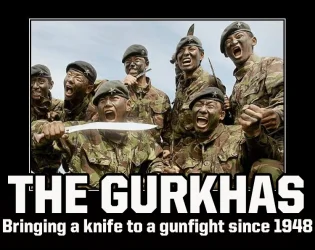Can't really get to that leverage point without attacking, so the point is moot.....A bit of a necro (well a lot of a necro) but you can do more things than attack. One of the things I like about the reverse grip is what I have done irl using flashlights like this...Stinger® Series - Stinger® LED | Streamlight and in training with training knifes. You can use it for control as it creates an angle with your forearm. This control then can provide an opening, with the knife, for a back handed stab or slash. I think that, sometimes, people become preoccupied with stabbing and slashing with a knife. Yes this is what the knife was designed for, but you can do so much more with the weapon if you know how to use it (and the knife handle is designed appropriately to provide for better retention. Karambit style handles are ideal for this kind of work imo).
So back to the point. You can be looking at someone holding a knife in their right hand saying "these are his most practical avenues of attack" but if you are not aware be wondering where all of the leverage is coming on that is forcing an arm in a direction you don't want it to go, and now there is an opening for whatever.
.....not just a necro, but a necrofail!



